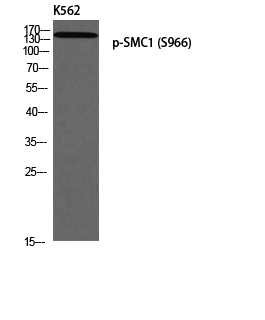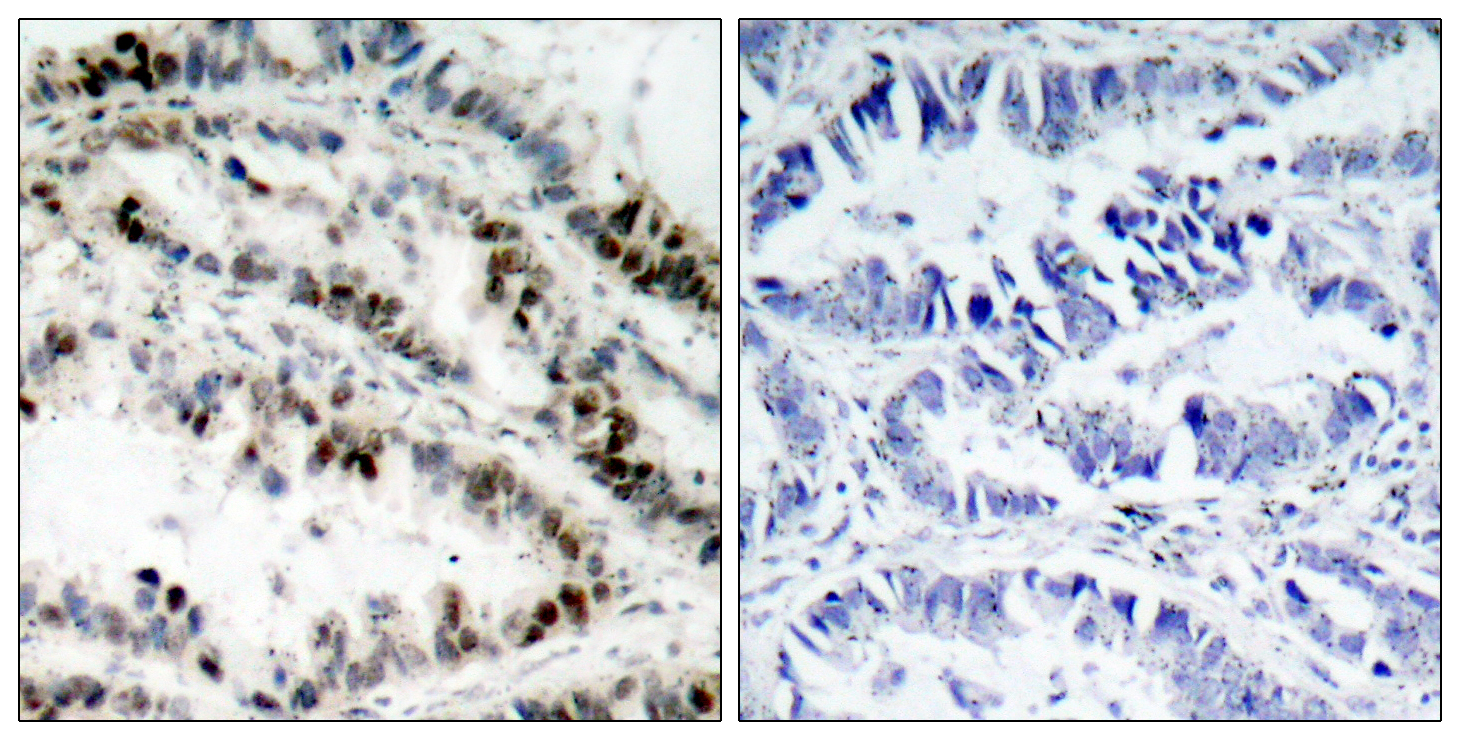
Catalog: KA1652C
Size
Price
Status
Qty.
96well
$470.00
In stock
0
Add to cart


Collected


Collect
Main Information
Reactivity
Human, Mouse
Applications
ELISA
Conjugate/Modification
Phospho
Detailed Information
Storage
2-8°C/6 months,Ship by ice bag
Modification
Phospho
Detection Method
Colorimetric
Related Products
Antigen&Target Information
Gene Name:
SMC1A
show all
Other Name:
Structural maintenance of chromosomes protein 1A ;
SMC protein 1A ;
SMC-1-alpha ;
SMC-1A ;
Sb1.8 ;
SMC protein 1A ;
SMC-1-alpha ;
SMC-1A ;
Sb1.8 ;
show all
Background:
disease:Defects in SMC1A are the cause of Cornelia de Lange syndrome type 2 (CDLS2) [MIM:300590]; also known as Cornelia de Lange syndrome X-linked. CDLS is a clinically heterogeneous developmental disorder associated with malformations affecting multiple systems. CDLS is characterized by facial dysmorphisms, abnormal hands and feet, growth delay, cognitive retardation and various other malformations including gastroesophageal dysfunction and cardiac, ophthalmologic and genitourinary anomalies.,domain:The flexible hinge domain, which separates the large intramolecular coiled coil regions, allows the heterotypic interaction with the corresponding domain of SMC3, forming a V-shaped heterodimer. The two heads of the heterodimer are then connected by different ends of the cleavable RAD21 protein, forming a ring structure.,function:Involved in chromosome cohesion during cell cycle and in DNA repair. Central component of cohesin complex. The cohesin complex is required for the cohesion of sister chromatids after DNA replication. The cohesin complex apparently forms a large proteinaceous ring within which sister chromatids can be trapped. At anaphase, the complex is cleaved and dissociates from chromatin, allowing sister chromatids to segregate. The cohesin complex may also play a role in spindle pole assembly during mitosis. Involved in DNA repair via its interaction with BRCA1 and its related phosphorylation by ATM, or via its phosphorylation by ATR. Works as a downstream effector both in the ATM/NBS1 branch and in the ATR/MSH2 branch of S-phase checkpoint.,PTM:Phosphorylated by ATM upon ionizing radiation in a NBS1-dependent manner. Phosphorylated by ATR upon DNA methylation in a MSH2/MSH6-dependent manner. Phosphorylation of Ser-957 and Ser-966 activates it and is required for S-phase checkpoint activation.,similarity:Belongs to the SMC family. SMC1 subfamily.,subcellular location:Associates with chromatin. Before prophase it is scattered along chromosome arms. During prophase, most of cohesin complexes dissociate from chromatin probably because of phosphorylation by PLK, except at centromeres, where cohesin complexes remain. At anaphase, the RAD21 subunit of the cohesin complex is cleaved, leading to the dissociation of the complex from chromosomes, allowing chromosome separation. In germ cells, cohesin complex dissociates from chromatin at prophase I, and may be replaced by a meiosis-specific cohesin complex. The phosphorylated form on Ser-957 and Ser-966 associates with chromatin during G1/S/G2 phases but not during M phase, suggesting that phosphorylation does not regulate cohesin function. Integral component of the functional centromere-kinetochore complex at the kinetochore region during mitosis.,subunit:Interacts with POLE. Interacts with SYCP2. Interacts with BRCA1. Found in a complex with CDCA5, SMC3 and RAD21, PDS5A/APRIN and PDS5B/SCC-112 (By similarity). Forms a heterodimer with SMC3 in cohesin complexes. Cohesin complexes are composed of the SMC1 (SMC1A or SMC1B) and SMC3 heterodimer attached via their hinge domain, RAD21 which link them, and one STAG protein (STAG1, STAG2 or STAG3), which interacts with RAD21. In germ cell cohesin complexes, SMC1A is mutually exclusive with SMC1B. Interacts with BRCA1. Interacts with NDC80.,
show all
Function:
mitotic sister chromatid segregation, cell cycle checkpoint, M phase of mitotic cell cycle, microtubule cytoskeleton organization, mitotic cell cycle, M phase, nuclear division, RNA splicing, via transesterification reactions, RNA splicing, via transesterification reactions with bulged adenosine as nucleophile, nuclear mRNA splicing, via spliceosome, sister chromatid segregation, DNA metabolic process, DNA repair, RNA processing, mRNA processing, response to DNA damage stimulus, cytoskeleton organization, microtubule-based process, cell cycle, spindle organization, mitotic spindle organization, chromosome segregation, sister chromatid cohesion, mitotic sister chromatid cohesion, mitosis,meiosis, intracellular signaling cascade, RNA splicing, response to radiation, response to abiotic stimulus, mRNA metabolic process, cell cycle process, cell cycle phase, cellular response to stress, DNA damage response, signal transduction, organelle fission, chromosome organization, cell division, meiotic cell cycle, M phase of meiotic cell cycle,regulation of cell cycle,
show all
Cellular Localization:
Nucleus . Chromosome . Chromosome, centromere, kinetochore . Associates with chromatin. Before prophase it is scattered along chromosome arms. During prophase, most of cohesin complexes dissociate from chromatin probably because of phosphorylation by PLK, except at centromeres, where cohesin complexes remain. At anaphase, the RAD21 subunit of the cohesin complex is cleaved, leading to the dissociation of the complex from chromosomes, allowing chromosome separation. In germ cells, cohesin complex dissociates from chromatin at prophase I, and may be replaced by a meiosis-specific cohesin complex. The phosphorylated form on Ser-957 and Ser-966 associates with chromatin during G1/S/G2 phases but not during M phase, suggesting that phosphorylation does not regulate cohesin function. Integral component of the functional centromere-kinetochore complex at the kinetochore region during mitosis.
show all
Signaling Pathway
Reference Citation({{totalcount}})
Catalog: KA1652C
Size
Price
Status
Qty.
96well
$470.00
In stock
0
Add to cart


Collected


Collect
Recently Viewed Products
Clear allPRODUCTS
CUSTOMIZED
ABOUT US
Toggle night Mode
{{pinfoXq.title || ''}}
Catalog: {{pinfoXq.catalog || ''}}
Filter:
All
{{item.name}}
{{pinfo.title}}
-{{pinfo.catalog}}
Main Information
Target
{{pinfo.target}}
Reactivity
{{pinfo.react}}
Applications
{{pinfo.applicat}}
Conjugate/Modification
{{pinfo.coupling}}/{{pinfo.modific}}
MW (kDa)
{{pinfo.mwcalc}}
Host Species
{{pinfo.hostspec}}
Isotype
{{pinfo.isotype}}
Product {{index}}/{{pcount}}
Prev
Next
{{pvTitle}}
Scroll wheel zooms the picture
{{pvDescr}}


















